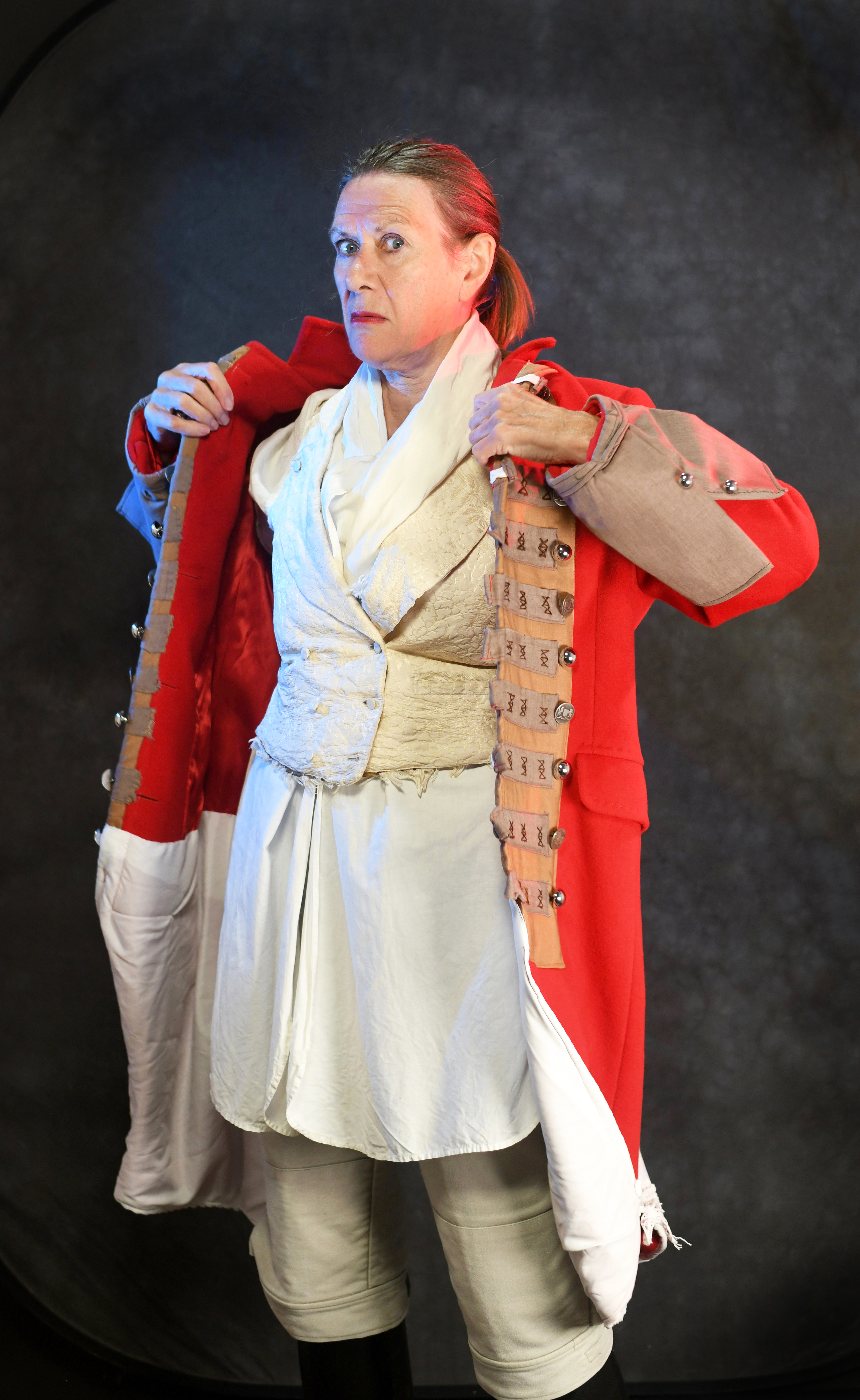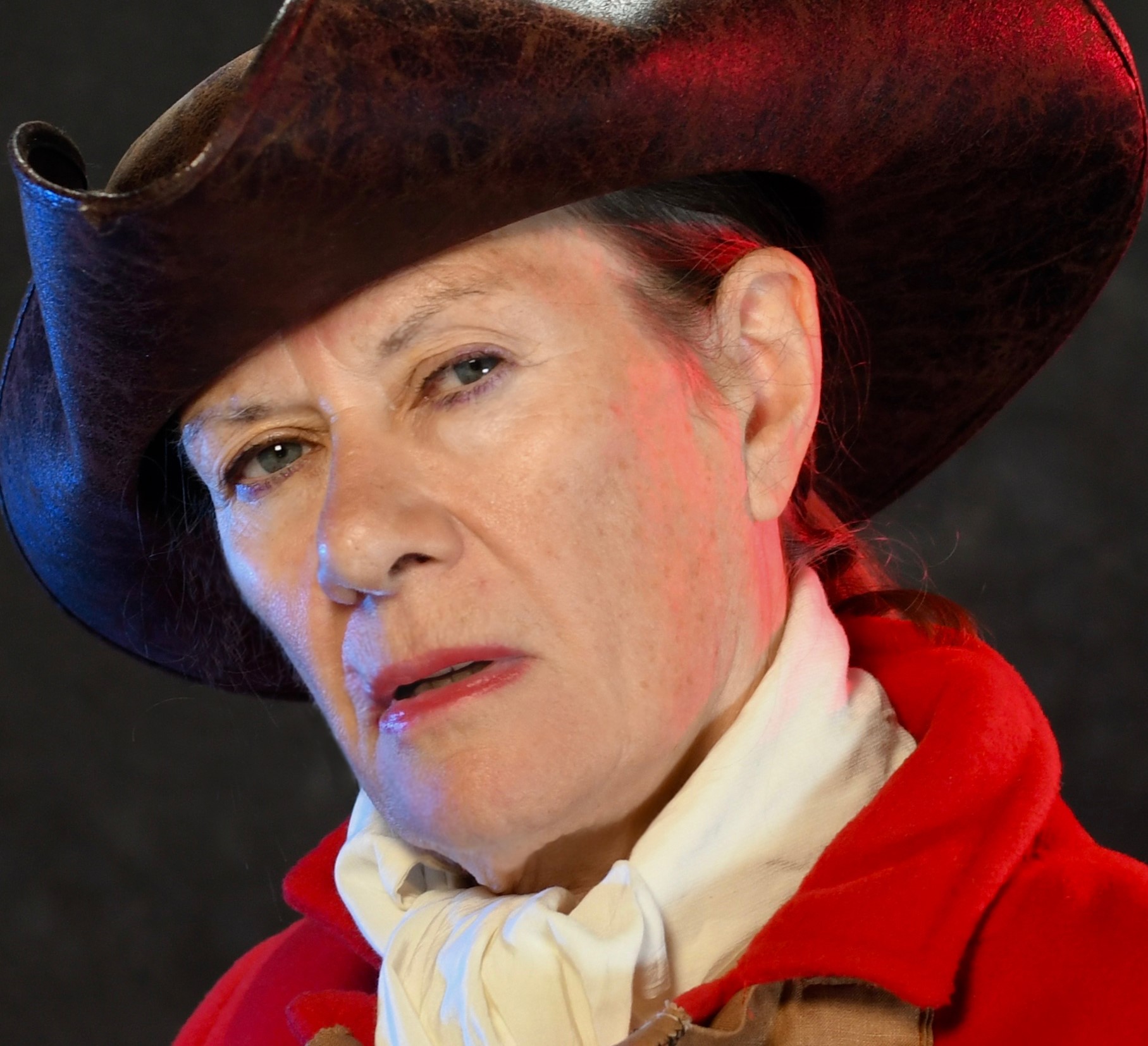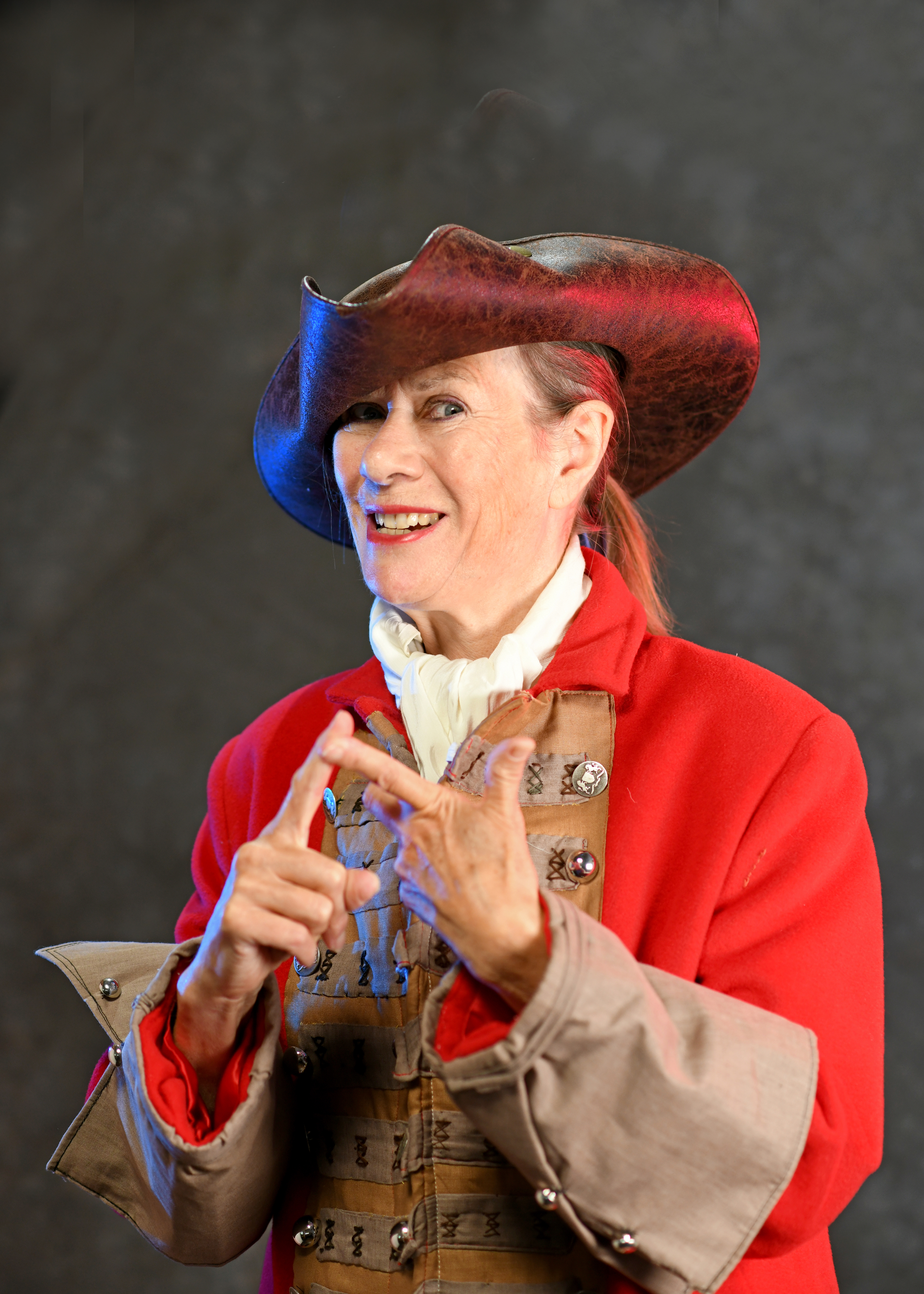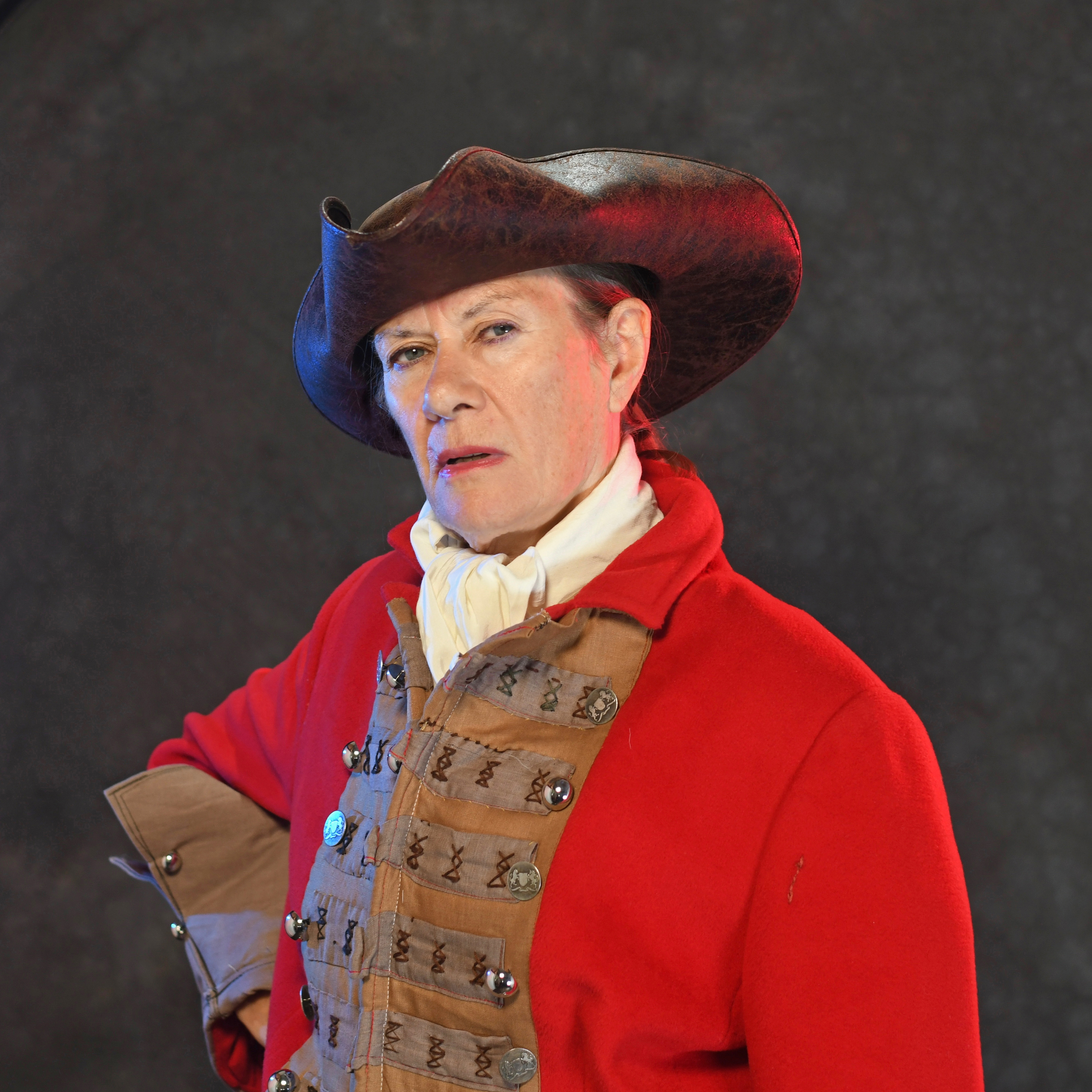- Screen Colours:
- Normal
- Black & Yellow

Hannah Snell joined the marines and fought the French at Pondicherry, India in 1749. She was wounded but got home to Wapping, and entertained keen audiences for two months at the New Wells Spa Theatre, St Pancras in 1750 "filling up the stage in a very agreeable manner".
In 2014, the Huntington Library Quarterly published an essay I had co-written with David Worrall, Emeritus Professor of English at Nottingham Trent, which explored the facts around Hannah Snell. My new show Hannah Snell the Female Soldier 1750, is built on what David and I found out.
In the summer of 1750, Hannah, who had returned from fighting and being wounded in India earlier in the year, performed in what might be called a variety show at one of London's summer theatres.
The New Wells Spa staged tumblers, dancers, harlequins, and Hannah. She sang to old ballad tunes and her repertoire began with the fashionable patriotic Britannia's Goldmine , or the "Herring Fisherie Forever", a new ballad to the tune of "There was a Jovial Beggar". She followed that with a New Song that she might have made up (she couldn't write or read music) showcasing her the treble voice as a cabin boy and a deeper voice as a mate. She also performed the Manual Exercise, a set of movements with a flintlock (the gun of the moment), which could be seen practiced by soldiers (males - unless there were cross-dressed females amongst them) on the parade ground at St James every day.
As her act grew in popularity Hannah developed it to lead what was a chorus line of marching uniformed women marching and doing the Manual exercise. Of course, they could learn that from her or from the illustrations in Benjamin Cole's "The Soldier's Pocket Companion, Or the Manual of the British Foot" (1746). Female performers in uniform were a beloved staple of eighteenth century theatre and Hannah seized on a moment. She might have learned from the same book or by watching someone else. However, her experience as a soldier is proved by her army pension, granted by the Duke of Cumberland. The prints from her book, which she dictated to a journalist, and sold for a shilling, are kept at the National Portrait Gallery in London and the Huntingdon Library in California.
The picture here is a coloured version from the frontispiece of that book, which used known tropes about female warriors but created new tropes - plagiarized by Hermann Mann in his book about Deborah Sampson - a female soldier in the American Revolutionary War.
Deborah also went on stage with an account of her life, but that's another story.
 |
 |
 |